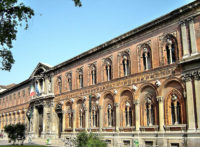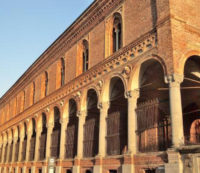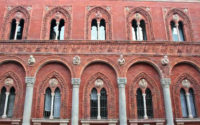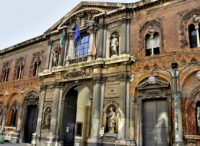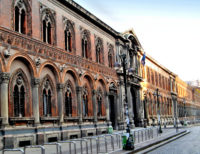Once called by the Milanese “Ca’ Granda” (the Big House) this building was commissioned by Francesco Sforza who, in 1456, decided to gather into one hospital the numerous institutions scattered about the town.
Antonio Averutino (called Filarete) signed, as designer, the plans for the main block of buildings. A great many important architects worked on the edifice after him until the early 19th century. The result is an unusual picturesque mixture of styles, motifs, and decorative forms Filarete s style here is typical of the architecture of the transitional period between Gothic and Renaissance There is a large and majestic interior courtyard with a columned arcade and an imposing loggia.
The Ca’ Granda ceased to be a hospital in 1924. it now houses the chancellorship, offices and some of the schools of the University degli Studi. The entrance is at 5 Via Festa del Perdono.



